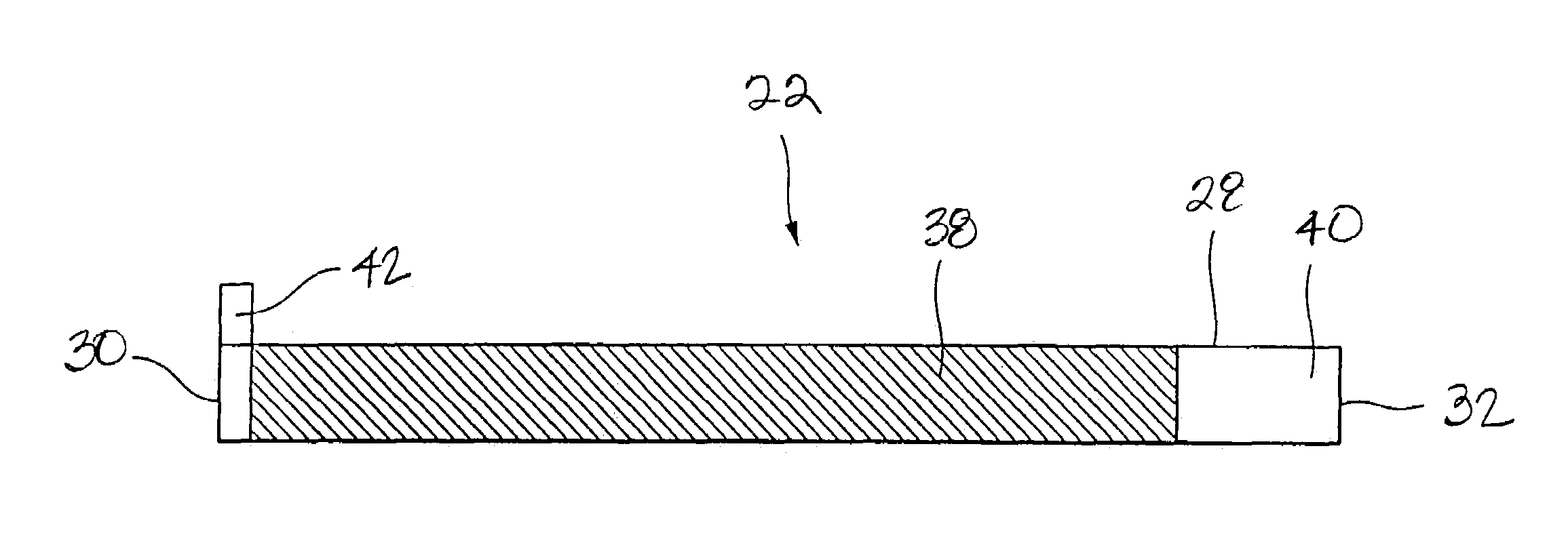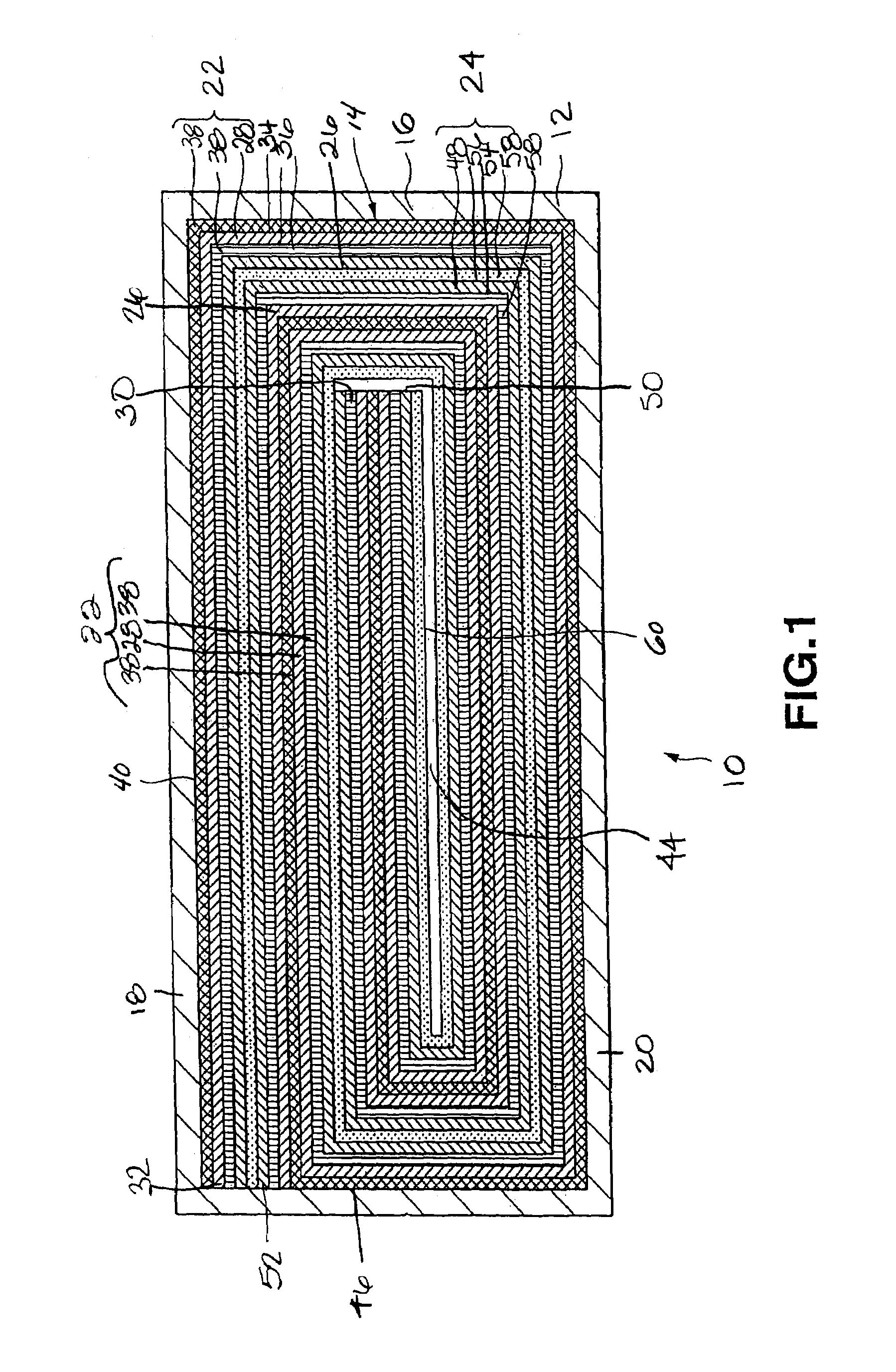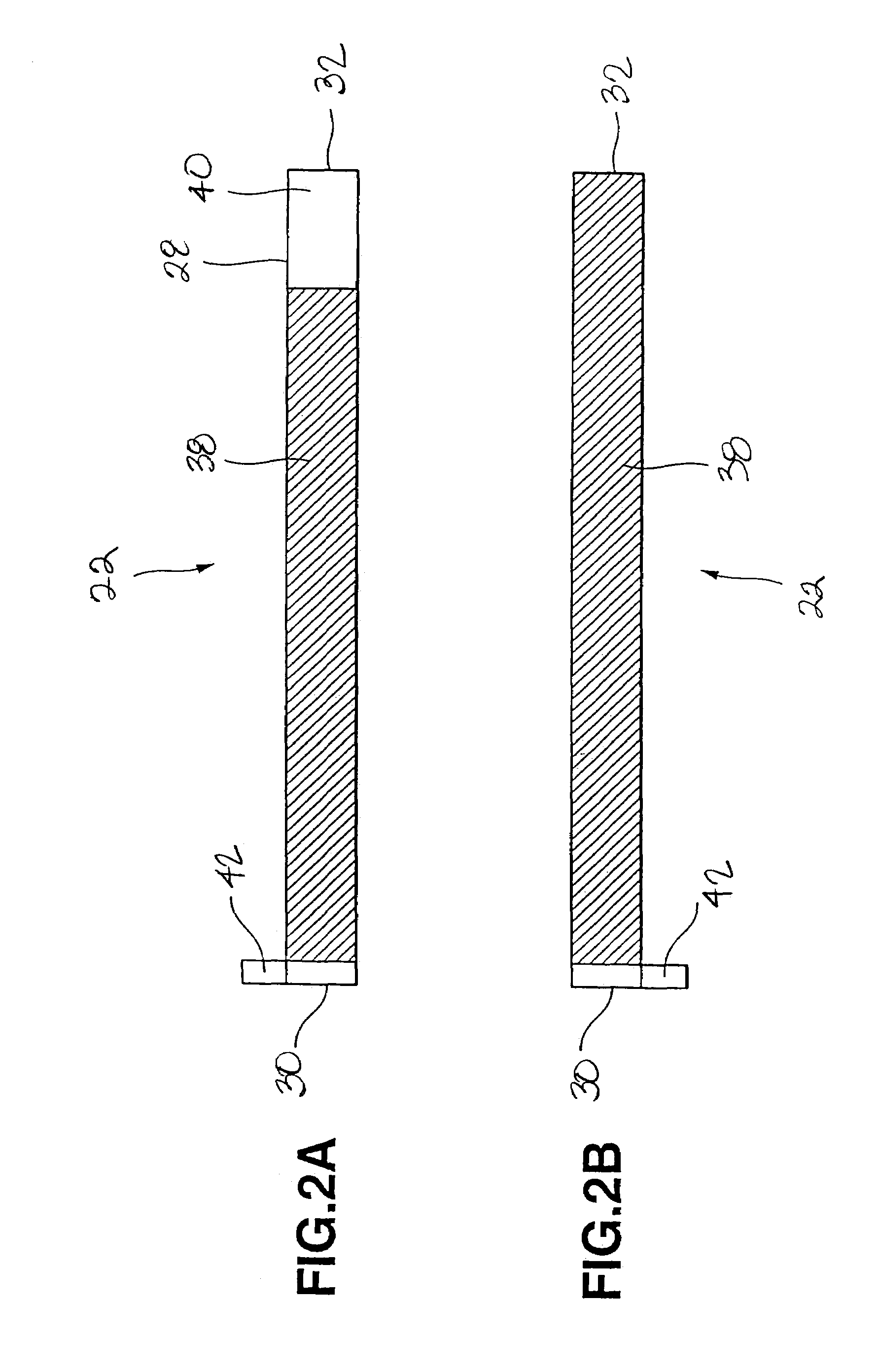Non-aqueous electrolyte cell and solid electrolyte cell
a solid electrolyte and electrolyte technology, applied in the direction of cell components, final product manufacturing, sustainable manufacturing/processing, etc., can solve the problems of increasing the toxicity of cathode active materials, affecting so as to reduce internal shorting, improve the cyclic characteristics of the cell, and maintain constant electrical capacity
- Summary
- Abstract
- Description
- Claims
- Application Information
AI Technical Summary
Benefits of technology
Problems solved by technology
Method used
Image
Examples
example 1
[0056]A cell was prepared under the same conditions as those for the cell of Comparative Example 1, except that the coating thickness on one face of the cathode current collector was 64.5 μm, the coating thickness on one face of the anode current collector was 48.5 μm, and the coating length of the cathode active material on the outer face of the cathode current collector, at the time of winding, was 23 cm from the cathode beginning end so that the total thickness of the layered and coiled cathode, anode and separator was 3.11 mm as in the cell of Comparative Example 1. In the cell of the present Example 1, the portion of the cathode current collector lying on the radially outermost periphery and facing the inner surface of the walls of the cell can, that is, the outer face of the current collector near the terminating end of the cathode current collector, is provided with a current collector exposing portion that is not coated with the cathode active material.
example 2
[0057]A cell was prepared under the same conditions as those for the cell of the Comparative Example 1, except that the coating thickness of the cathode active material on one face of the cathode current collector was 65 μm, the coating thickness of the anode active material on one face of the anode current collector was 49 μm, and the coating length of the cathode active material on the inner face of the cathode current collector, at the time of winding, was 24 cm measured from the terminating end of the cathode current collector thereby providing a total thickness of 3.11 mm as in the cell of Comparative Example 1. In the cell of the present Example 2, however, the inner face of the anode current collector lying in the core or innermost portion of the cell toward the beginning end of the current collector wherein the inner face of the anode current collector faces itself is provided with a current collector exposing portion not coated with the anode active material.
example 3
[0058]A cell was prepared under the same conditions as those for the cell of the Comparative Example 1, except that the coating thickness of the cathode active material on one face of the cathode current collector was 70.5 μm, the coating thickness of the anode active material on one face of the anode current collector was 53 μm, the coating length of the cathode active material on the outer face of the cathode current collector, at the time of winding, was 23 cm measured from the beginning end of the cathode current collector, and the coating length of the anode active material on the inner face of the anode current collector, at the time of winding, was 24 cm measured from the terminating end of the anode current collector, so that the total thickness of the cell device will be 3.11 mm as in the cell of Comparative Example 1. In the cell of the present Example 3, however, the outer face of the cathode current collector lying at the radially outermost periphery of the cell device f...
PUM
| Property | Measurement | Unit |
|---|---|---|
| density | aaaaa | aaaaa |
| specific surface area | aaaaa | aaaaa |
| particle size | aaaaa | aaaaa |
Abstract
Description
Claims
Application Information
 Login to View More
Login to View More - R&D
- Intellectual Property
- Life Sciences
- Materials
- Tech Scout
- Unparalleled Data Quality
- Higher Quality Content
- 60% Fewer Hallucinations
Browse by: Latest US Patents, China's latest patents, Technical Efficacy Thesaurus, Application Domain, Technology Topic, Popular Technical Reports.
© 2025 PatSnap. All rights reserved.Legal|Privacy policy|Modern Slavery Act Transparency Statement|Sitemap|About US| Contact US: help@patsnap.com



